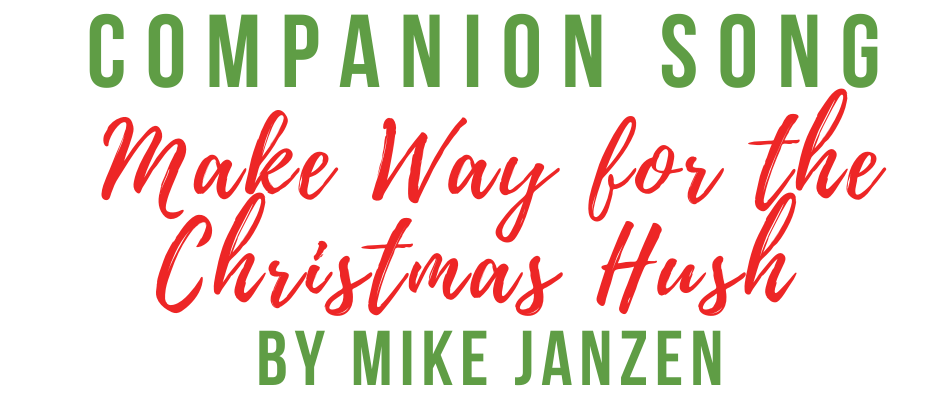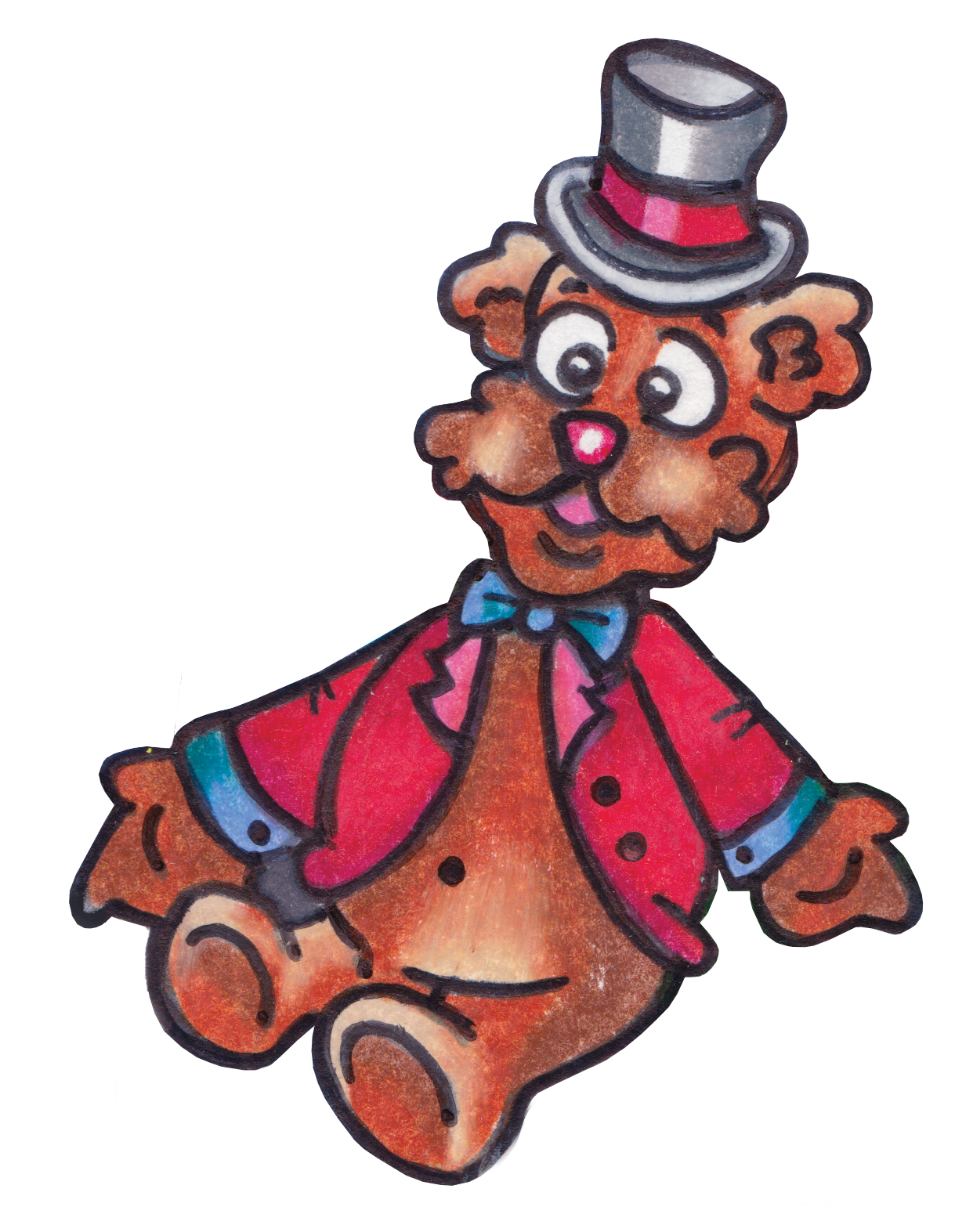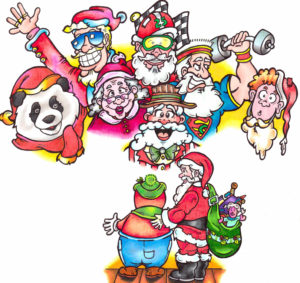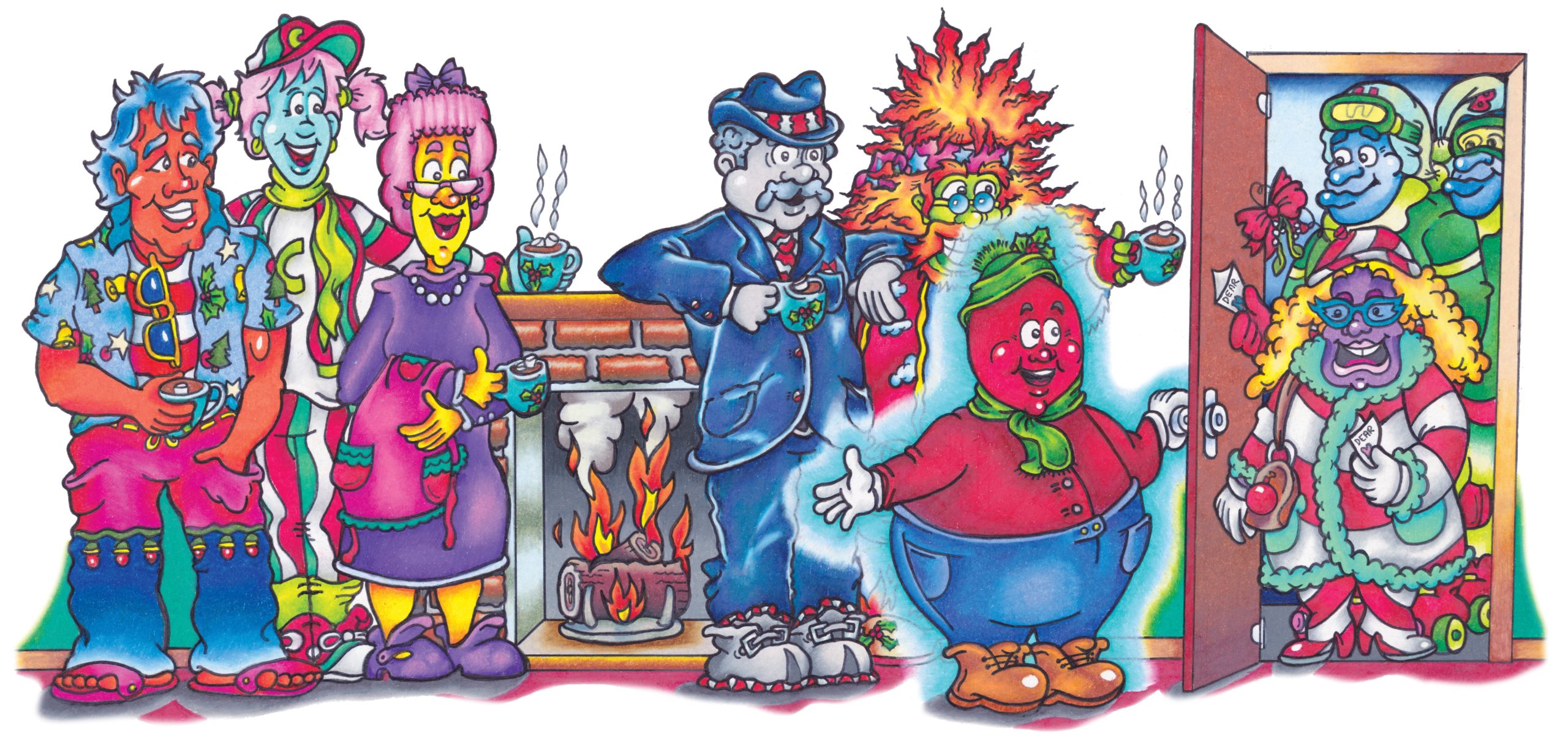

So happy you’re here! Below you’ll find resources related to our latest children’s book, Make Way for the Christmas Hush. We’ve included information and activities mentioned in the book, and some fun additional resources, too!
So settle in and have fun! For information on purchasing the book, please visit the Compassion Series Books page.

What an honour to share this wonderfully whimsical song created by Mike Janzen for – and as part of – the Make Way for the Christmas Hush Project. Have a listen and enjoy! →





In this hush
I pray for the blue,
For those who feel lonely,
Or aren’t sure what to do.
In this hush
I give thanks for the kind,
The helpers who keep others
Always in mind.
In this hush
I’ll do my best to be
Thoughtful and kind
And the very best me.
In this hush
I ask that I may
Be true to these words
And all that I pray.
Amen


May your hoopla be happy and your hustle be slow
May your bustle not rustle good sense as you go
May your frenzy and fuss not steal from your guests
May cheer keep you near to the things that are best
May the blues visit softly and rest in your prayers
May the buzz of your loved ones calm some of your cares
As you scurry and worry, scuttle and rush
May you still make a way for your own Christmas hush.


How would you colour The Christmas Hush and his friends?
Here’s your chance to have fun and choose your own colours
and patterns! Print out these four free Christmas Hush colouring
pages: 3 illustrations from the book, and 1 new surprise drawing!
Get creative and have lots of fun!

This is a fun illustration that did not end up in the book. Can you guess which one is which:
• Hollywood Claus • Barber Shop Claus • Super Claus • Panda Claus •
• A Lost Claus • Grandma Claus • Speedway Claus•  Click to enlarge
Click to enlarge
 The live Christmas Hush performances, featuring acclaimed stage actor/producer Jason Hildebrand and jazz piano great Mike Janzen, are adapted from the book “Make Way for The Christmas Hush” written and illustrated by Tim Huff. For the live performances, Tim gave all the characters brief speaking parts to complement the narration. Here’s a fun peek at the scripted voices.
The live Christmas Hush performances, featuring acclaimed stage actor/producer Jason Hildebrand and jazz piano great Mike Janzen, are adapted from the book “Make Way for The Christmas Hush” written and illustrated by Tim Huff. For the live performances, Tim gave all the characters brief speaking parts to complement the narration. Here’s a fun peek at the scripted voices.

At the back of the book Make Way for The Christmas Hush, there is a special section called “Learn with Hush.” This section of the book answers these questions: (1) How did the tradition of having Christmas trees start? (2) Who made the very first candy cane? And why? (3) What is the first story ever told about Santa Claus? And, what about Santa now? (4) Where can I find the story about the very first Christmas?
Here are a few more Questions and Answers you might find interesting:
Question:
What does the word “hush” actually mean?
Answer:
Used as a noun, a “hush” is a peaceful silence or calm, most commonly in-between or after lots of noise and commotion. Used as a verb, to “hush” means to make quiet or still – usually in a gentle way – as in the traditional, anonymously written lullaby “Hush little baby, don’t say a word.”
Question:
Who wrote the Christmas carol (song) “Silent Night?” When? And where?
Answer:
The lyrics for Silent Night (“Stille Nacht” as originally written in German) were crafted in 1816 by a young priest named Father Joseph Mohr. Two years later, in preparation for a service at a small church in the town of Oberndorf in the Austrian Empire (present-day Austria), Father Mohr brought the words to a local school-master and organist named Franz Xaver Gruber and asked him to write a melody. He also asked him to write the accompanying music for guitar, because the church organ had been ruined in a flood. Over 200 years ago, on Christmas Eve 1818, the song was first performed, in that little church, in that small town.
Question:
When and where were the very first Santa Claus parades?
Answer:
The first Santa Claus parade known occurred in Peoria, Illinois USA, in 1887. It very uniquely consisted of decorated boats and barges floating down the Illinois River, to celebrate the completion of the Upper Free Bridge. The following year the parade moved to dry land.
The very first Santa Claus parade in Canada (known around the world as “The Original Santa Claus Parade”) happened well over 100 years ago, on December 2nd, 1905, in Toronto Canada. Santa arrived by train, was met by Timothy and Margaret Eaton, owners of Eaton’s Department Store (“Canada’s Greatest Store”). They marched through the city streets as people followed them to, and into, the Eaton’s store. The response was so great that the Eatons added trumpeters and marchers the following year. As the years went on the parade grew and grew, adding new attractions with each parade. In 1913, eight live reindeer, accompanied by a wildlife veterinarian, were brought in from Labrador to chauffeur Santa down Yonge Street. The parade was first shown on TV in 1952 in black and white.
Question:
What are Christmas elves?
Answer:
While there are all kinds of interesting and strange ancient legends from around the world about magical elves that live in the forest, fables about Christmas elves always suggest they happily live at the North Pole with Santa and Mrs. Claus. Mainly in Canadian, American, and British cultures, this folklore speaks of elves who serve as Santa’s helpers by making toys throughout the year, loading the sleigh on Christmas Eve, tending to the reindeer, and helping Mrs. Claus with her Christmas baking. Christmas elves were first recognized in literature in 1856 by Louisa May Alcott, in an unpublished book titled Christmas Elves. In modern times, cartoons and movies predominantly recognize Christmas elves simply as a fun, funny and happy part of the contemporary Santa story.
Question:
What does fa-la-la-la-la mean?
Answer:
It is commonly understood that “fa-la-la-la” means what ever you want it to mean. (Which adds an extra measure of fun to the song.) Or, nothing at all!
In the very famous Christmas song titled Deck the Halls, over three verses, the lyrics “Fa-la-la-la-la, la-la-la-la” are sung 12 times, equalling the same number of lyric lines with actual words. While the song’s melody dates back to the 16th Century (over 400 years ago), the English language lyrics – including all the fa-la-la-la’s – were written by the Scottish musician, Thomas Oliphant, in 1862.
The fa-la-la-las are simply vocal dance-like rhythms, common in the old music genre known as Balletto.
Question:
What are the most popular Christmas TV shows for children?
Answer:
While there are many children’s Christmas specials that air on television and streaming services, and more created with each passing year, countless online poles consistently identify the same few productions as “the best” of them all. Interestingly, the top three most commonly noted all aired in the mid 1960’s. They are: 1. A Charlie Brown Christmas (1965), 2. How the Grinch Stole Christmas (1966), 3. Rudolph the Rednosed Reindeer (1964)
Question:
Why do people put a star or an angel on the top of their Christmas tree?
Answer:
When people first started decorating Christmas trees (the 16th Century, 400+ years ago), it was most common to put a figure of the baby Jesus on the top of the Christmas tree. This trend changed over time towards using other Christian nativity symbols; a star or an angel being the most popular.
The Star of Bethlehem (also known as The Christmas Star) is a 5 pointed star. It represents the star that guided the magi (also known as the Wise Men or Three Kings) to Bethlehem – the birthplace of the baby Jesus.
The word “angel” is a translation of a Greek word (“angelos”) which means “messenger”. In the Christian telling of the nativity story found in the Bible, an angel named Gabriel is the one who tells Mary that she will give birth to the baby Jesus. Also, it is an angel that announces Jesus’ birth to the shepherds in the fields, who then come to see for themselves. Also, a chorus (singing group) of angels appear after Jesus birth and sing “Glory to God in the highest and peace on earth to all humankind”.


